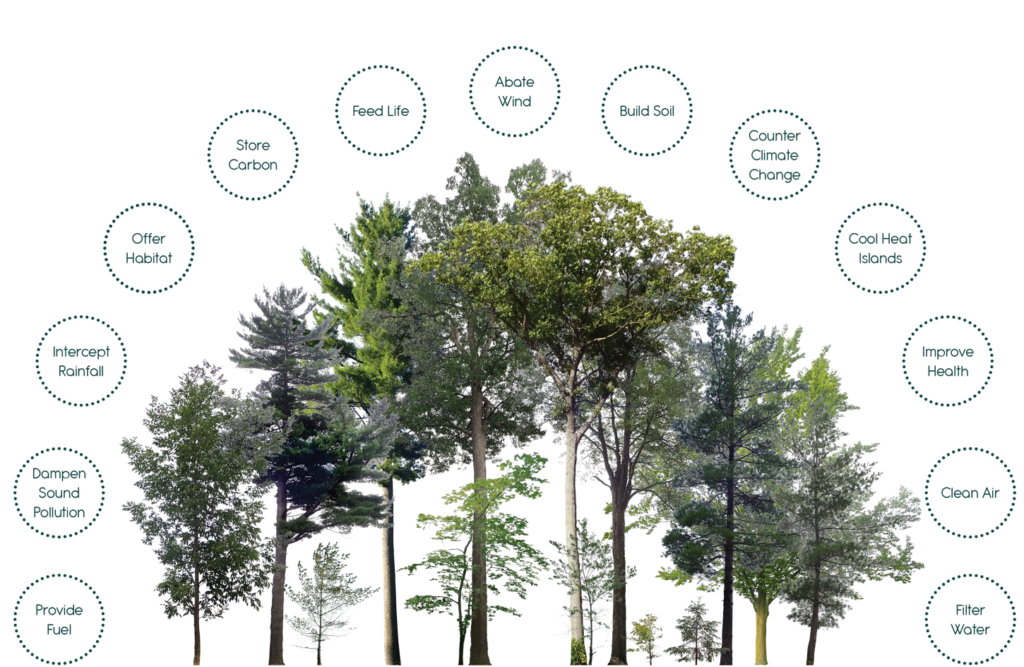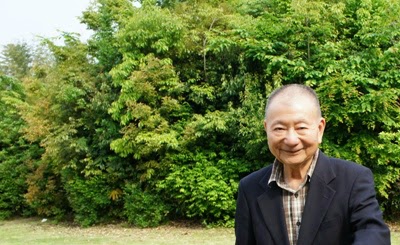The BC Small Wetlands Association has an exciting new project that aligns with some progressive thinking around effective carbon sequestration and climate change action. We are promoting the creation of Miyawaki pocket forests, which can be planted in spaces as small as 4m2, as a way to rapidly build climate resilience.
With help from indigenous and non-indigenous students and members of the local community we planted the first two Miyawaki pocket (or tiny or mini) forests with native trees and shrubs at the park on Earth Day 2023. They have grown so well that we are advocating for more and more mini forests in small urban and suburban spaces and on private land, as well as in parks, and in afforestation and reforestation projects. This is the most effective way to grow more trees more rapidly to meet the Government’s 2 Billion Trees by 2030 target.
How the Miyawaki mini forest method works

Miyawaki forests grow in two to three years and are self-sustaining. Density is the key, with the inclusion of a wide variety of pioneer native species of trees and shrubs.
Rapid growth and low maintenance
Such forests grow 10 times faster and sustain 100 times more biodiversity. Compared to a conventional forest, the pocket forest boasts 30 times or more carbon-dioxide absorption. In as few as three years, we will have the beginning of a native forest that is completely chemical and fertilizer free with little to no maintenance after two years.
Mini forests can be created anywhere
A pocket forest can be created in any place where sunlight is available for at least 8 hours a day. It attracts local pollinators, butterflies, snails, amphibians and birds. It is scalable to any size and pocket forests can add value to any small available urban or suburban space, acreage, park or private yard, inspiring municipalities, homeowners, schools, businesses and others to create their own.
This idea has proven so effective that it has been implemented throughout India and Europe to help mitigate the effects of climate change. It is now becoming popular in USA and eastern Canada and the first mini forest in western Canada was planted at a Richmond BC school in 2022. We plan to be the first to introduce mini forests to the BC Interior and we look forward to engaging the community and forming partnerships with likeminded organizations in the implementation of the project.
About Professor Miyawaki
This method of afforestation was developed by the Japanese botanist and plant ecology expert Professor Akira Miyawaki, and draws inspiration from nature’s ecosystems to create 100% organic, dense and diverse pioneer forests in as little as 20-30 years.
Miyawaki forests grow 10x faster, are 30 x denser and contain 100x more biodiversity. Since they’re quick to establish, maintenance-free after the first two-to-three years, and can be created on sites as small as 4 sq m, Miyawaki forests are viable solutions for cities looking to rapidly build climate resilience.
Akira Miyawaki developed the forest restoration method that bears his name in the 1970s, as Japan’s rapid postwar development was showing its downside in the form of pollution and deforestation. The young scientist understood something that is not necessarily obvious: that humans depend on functioning ecosystems for our well-being and survival.
At the heart of the Miyawaki method is the identification of a combination of native plant species best suited to the specific conditions. The planting site can be as small as only 4 square metres in size.
“It is vegetation, especially forests with multiple, complex layers of various trees, that controls a wide range of environmental processes and conditions,” Miyawaki wrote in his 2006 book, The Healing Power of Forests, coauthored with American ecologist Elgene O. Box.
“A forest is much more than what you see,” explains Suzanne Simard, whose pioneering research shows how underground fungal networks connect trees to one another, allowing them to communicate and share nutrients. These webs of exchange enable a forest “to behave as though it’s a single organism,” with a kind of intelligence. A natural forest is a community of coexisting, interacting organisms – trees, shrubs, moss, fungi, bacteria, insects, animals (including humans acting as equal members of the community) – that rely on one another for food, shelter, and other ingredients of life.
The Miyawaki Method is unique in that it re-creates the conditions for a mature natural forest to arise within decades rather than centuries.
Planting a mini forest according to the Miyawaki Method ensures that the forest will be the best fit for its environment – more stable, more resistant to stress, and ultimately more successful.
The basics of creating a mini forest
Rejuvenating the soil is one of the basics of creating a mini-forest on a degraded site. In fact, it’s the critical first step—the goal is to simulate the living soil of a healthy, mature forest. This happens naturally during the stages of ecological succession, but because the Miyawaki Method skips immediately to the climax stage, some preparation is required to compensate. In the absence of a loose soil with plenty of organic matter, trees will struggle to grow properly. In a Miyawaki forest project, the soil is typically recharged by decompacting and amending the site with organic materials.
Planting density is another signature of the Miyawaki Method. Conventional wisdom says that plants compete for light, water, and soil nutrients; therefore, plants should have lots of space between them to reduce that competition. But it’s not how a Miyawaki forest works. For a Miyawaki forest, the standard planting density is three plants per square meter. This density helps achieve the goal of ecosystem regeneration. After all, in a natural forest, plants are not evenly and widely spaced. Dense planting stimulates mutualistic and competitive interactions among the plants and facilitates connections with soil microorganisms. It also promotes virtuous competition for sunlight, hastening upward growth.
Mulching is a critical component of the Miyawaki Method. After planting, the ground is covered with a thick mulch similar to fallen leaves on a forest floor. Indeed, once the young trees have had a chance to mature, they will contribute leaf mulch to the forest floor naturally. Mulch protects the bare soil from water loss by evaporation, from erosion, and from temperature extremes. Mulch also suppresses weed growth and eventually decomposes into the soil, enriching it.
As they become established over the first few years, the plantings typically need occasional watering and weeding, but after three years the young forest patches are developed enough to shade out weeds and shelter the soil. They are then generally self-sufficient and need no maintenance of any sort—no pruning, no watering, no fertilizing, no pest control—ever.
Visit Pleasant Valley Wetland Heritage Park this year to check on our progress, or look for posts and more information on the website.

![]()

